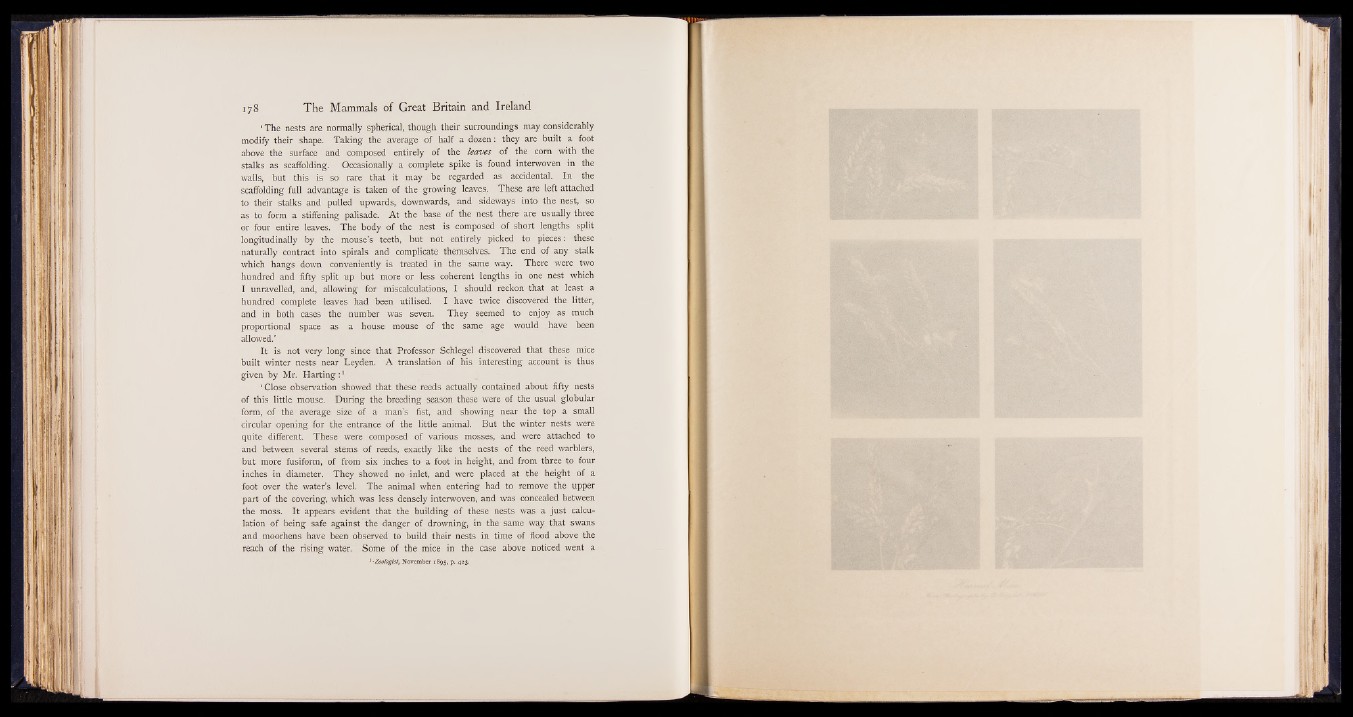
178 The Mammals of Great Britain and Ireland
‘ The nests are normally spherical, though their surroundings may considerably
modify their shape. Taking the average of half a dozen: they are built a foot
above the surface and composed entirely of the leaves of the corn with the
stalks as scaffolding. Occasionally a complete spike is found interwoven in the
walls, but this is so rare that it may be regarded as accidental. In the
scaffolding full advantage is taken of the growing leaves. These are left attached
to their stalks and pulled upwards, downwards, and sideways into the nest, so
as to form a stiffening palisade. At the base of the nest there are usually three
or four entire leaves. The body of the nest is composed of short lengths split
longitudinally by the mouse’s teeth, but not entirely picked to pieces: these
naturally contract into spirals and complicate themselves. The end of any stalk
which hangs down conveniently is treated in the same way. There were two
hundred and fifty split up but more or less coherent lengths in one nest which
I unravelled, and, allowing for miscalculations, I should reckon that at least a
hundred complete leaves had been utilised. I have twice discovered the litter,
and in both cases the number was seven. They seemed to enjoy as much
proportional space as a house mouse of the same age would have been
allowed.’
It is not very long since that Professor Schlegel discovered that these mice
built winter nests near Leyden. A translation of his interesting account is thus
given by Mr. Harting: 1
‘ Close observation showed that these reeds actually contained about fifty nests
of this little mouse. During the breeding season these were of the usual globular
form, of the average size of a man’s fist, and showing near the top a small
circular opening for the entrance of the little animal. But the winter nests were
quite different. These were composed of various mosses, and were attached to
and between several stems of reeds, exactly like the nests of the reed warblers,
but more fusiform, of from six inches to a foot in height, and from three to four
inches in diameter. They showed no inlet, and were placed at the height of a
foot over the water’s level. The animal when entering had to remove the upper
part of the covering, which was less densely interwoven, and was concealed between
the moss. It appears evident that the building of these nests was a just calculation
of being safe against the danger of drowning, in the same way that swans
and moorhens have been observed to build their nests in time of flood above the
reach of the rising water. Some of the mice in the case above noticed went a
1 •Zoologist, November 1895, p. 423.